
The wildlife of Tunisia is composed of its flora and fauna. It has 84 species of mammals and 375 species of birds. Tunisia is well documented for its addax and dama gazelle population.

The wildlife of Tunisia is composed of its flora and fauna. It has 84 species of mammals and 375 species of birds. Tunisia is well documented for its addax and dama gazelle population.
The fauna of Tunisia includes the following:
Spiders:
Insects:

The biodiversity of New Zealand, a large island country located in the south-western Pacific Ocean, is varied and distinctive. The species of New Zealand accumulated over many millions of years as lineages evolved in the local circumstances. New Zealand's pre-human biodiversity exhibited high levels of species endemism, but has experienced episodes of biological turnover. Global extinction approximately 65 Ma resulted in the loss of fauna such as non-avian dinosaurs, pterosaurs and marine reptiles e.g. mosasaurs, elasmosaurs and plesiosaurs. The ancient fauna is not well known, but at least one species of terrestrial mammal existed in New Zealand around 19 Ma. For at least several million years before the arrival of human and commensal species, the islands had no terrestrial mammals except for bats and seals, the main component of the terrestrial fauna being insects and birds. As recently as the 14th century a component has been introduced by humans, including many terrestrial mammals.
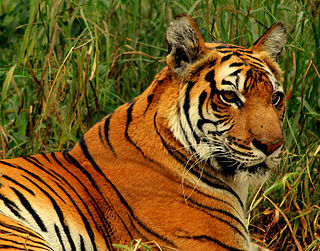
India is the world's 8th most biodiverse region with a 0.46 BioD score on diversity index, 102,718 species of fauna and 23.39% of the nation's geographical area under forest and tree cover in 2020. India encompasses a wide range of biomes: desert, high mountains, highlands, tropical and temperate forests, swamplands, plains, grasslands, areas surrounding rivers, as well as island archipelago. Officially, three out of the 36 Biodiversity Hotspots in the world are present in India: the Himalayas, the Western Ghats, and the Indo-Burma region. To these may be added the Sundarbans and the Terrai-Duar Savannah grasslands for their unique foliage and animal species. These hotspots have numerous endemic species. Nearly 5% of India's total area is formally classified under protected areas.

Borneo is the third largest island in the world. In prehistoric times it was connected to the Asian mainland due to geological and climate changes. During the recent ice ages of the Pleistocene and the Holocene separation from the mainland caused extinctions and speciation of fauna on the island.
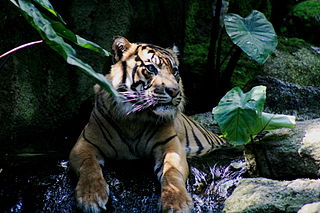
The fauna of Indonesia is characterised by high levels of biodiversity and endemicity due to its distribution over a vast tropical archipelago. Indonesia divides into two ecological regions; western Indonesia which is more influenced by Asian fauna, and the east which is more influenced by Australasian species.

The fauna of Venezuela consists of a huge variety of animals. Venezuela's diverse wildlife includes manatees, Amazon river dolphins, and Orinoco crocodiles, which have been reported to reach up to 6.6 metres (22 ft) in length. Some 23% of reptilian and 50% of amphibian species that inhabit the country are endemic to Venezuela. Overall, around 8,000 species are endemic to the country.

The state of Karnataka in South India has a rich diversity of flora and fauna. It has a recorded forest area of 38,720 km2 which constitutes 22% of the geographical area of the state. These forests support 25% of the elephant population and 20% of the tiger population of India. Many regions of Karnataka are still unexplored and new species of flora and fauna are still found. The mountains of the Western Ghats in the western region of Karnataka are a biodiversity hotspot. Two sub-clusters of the Western Ghats, Talacauvery and Kudremukh, are on a tentative list of sites that could be designated as World Heritage Sites by UNESCO. The Bandipur and Nagarahole national parks which fall outside these subclusters were included in the Nilgiri biosphere reserve in 1986, a UNESCO designation. In the Biligiriranga Hills the Eastern Ghats meet the Western Ghats. The state bird and state animal of Karnataka are Indian roller and the Indian elephant. The state tree and state flower are sandalwood and lotus. Karnataka is home to 524 tigers.

The wildlife of the Comoro Islands is composed of their flora and fauna.

The wildlife of Uganda is composed of its flora and fauna. Uganda has a wide variety of different habitats, including mountains, hills, tropical rainforest, woodland, freshwater lakes, swamps and savanna with scattered clumps of trees. The country has a biodiverse flora and fauna reflecting this range of habitats and is known for its primates, including gorillas and chimpanzees. There are ten national parks and thirteen wildlife reserves; some 345 species of mammal and 1020 species of bird have been recorded in the country.
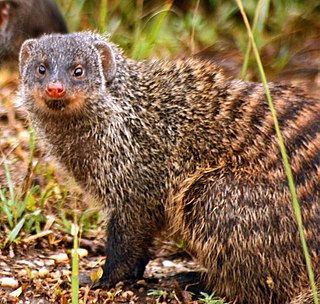
The wildlife of Senegal consists of the flora and fauna of this nation in West Africa. Senegal has a long Atlantic coastline and a range of habitat types, with a corresponding diversity of plants and animals. Senegal has 188 species of mammals and 674 species of bird.
The wildlife of Eritrea is composed of its flora and fauna. Eritrea has 96 species of mammals and a rich avifauna of 566 species of birds.

The fauna of Ireland comprises all the animal species inhabiting the island of Ireland and its surrounding waters.

The wildlife of Lesotho is composed of its flora and fauna. Lesotho has 60 species of mammals and 339 species of birds.

The wildlife of Libya is spread over the Mediterranean coastline and encompasses large areas of the Saharan desert. The protection of wildlife is provided through appropriate legislation in seven national parks, five reserves, 24 protected areas, two wetlands under Ramsar Convention, and also in other areas. Apart from these, there are also five UNESCO World Heritage Sites related to culture. The most important national parks are the El-Kouf National Park and Karabolli National Park. The well known nature reserves are the Benghazi Reserve and the Zellaf Reserve. The wildlife species recorded in the country are 87 mammals and 338 species of birds.

The wildlife of Eswatini is composed of its flora and fauna. The country has 107 species of mammals and 507 species of birds.
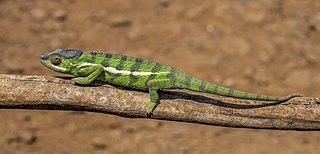
The wildlife of Réunion is composed of its flora, fauna and funga. Being a small island, it only has nine native species of mammals, but ninety-one species of birds.

The wildlife of Somalia includes the flora and fauna of Somalia, which is extremely diverse due to the country's location between the temperate and the tropical zones. Somalia has a long coastline, bordered by the Indian Ocean in the east and Red Sea in the north. The northwestern and central parts of the country are arid, or very dry. The southern and northeastern regions are semi-arid, receiving slightly more rainfall than the central and northwest regions. The coastal region is more humid due to its proximity to the ocean. Somalia is home to over 727 species of birds and boasts over 177 species of mammals.

The wildlife of Rwanda comprising its flora and fauna, in prehistoric times, consisted of montane forest in one third the territory of present-day Rwanda. However, natural vegetation is now mostly restricted to the three national parks and four small forest reserves, with terraced agriculture dominating the rest of the country.
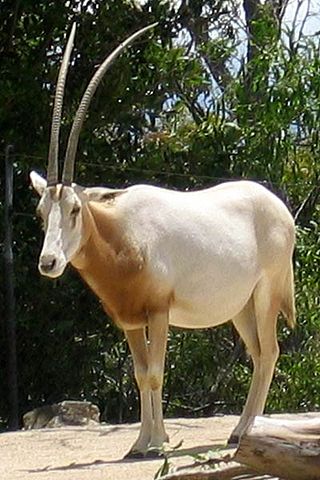
The wildlife of Western Sahara is composed of its flora and fauna. It has 40 species of mammals and 207 species of birds.

The fauna of Italy comprises all the animal species inhabiting the territory of the Italian Republic and its surrounding waters. Italy has one the highest level of faunal biodiversity in Europe, with over 57,000 species recorded, representing more than a third of all European fauna. This is due to various factors. The Italian peninsula is in the center of the Mediterranean Sea, forming a corridor between central Europe and North Africa, and it has 8,000 km (5,000 mi) of coastline. Italy also receives species from the Balkans, Eurasia, and the Middle East. Italy's varied geological structure, including the Alps and the Apennines, Central Italian woodlands, and Southern Italian Garigue and Maquis shrubland, also contribute to high climate and habitat diversity.

The wildlife of Somaliland includes the flora and fauna of Somaliland, which is extremely diverse due to the country's location between the temperate and the tropical zones. Somaliland is bordered by the Red Sea. The coastal region is more humid due to its proximity to the ocean. Somaliland is home to over 727 bird species and boasts over 177 species of mammals.